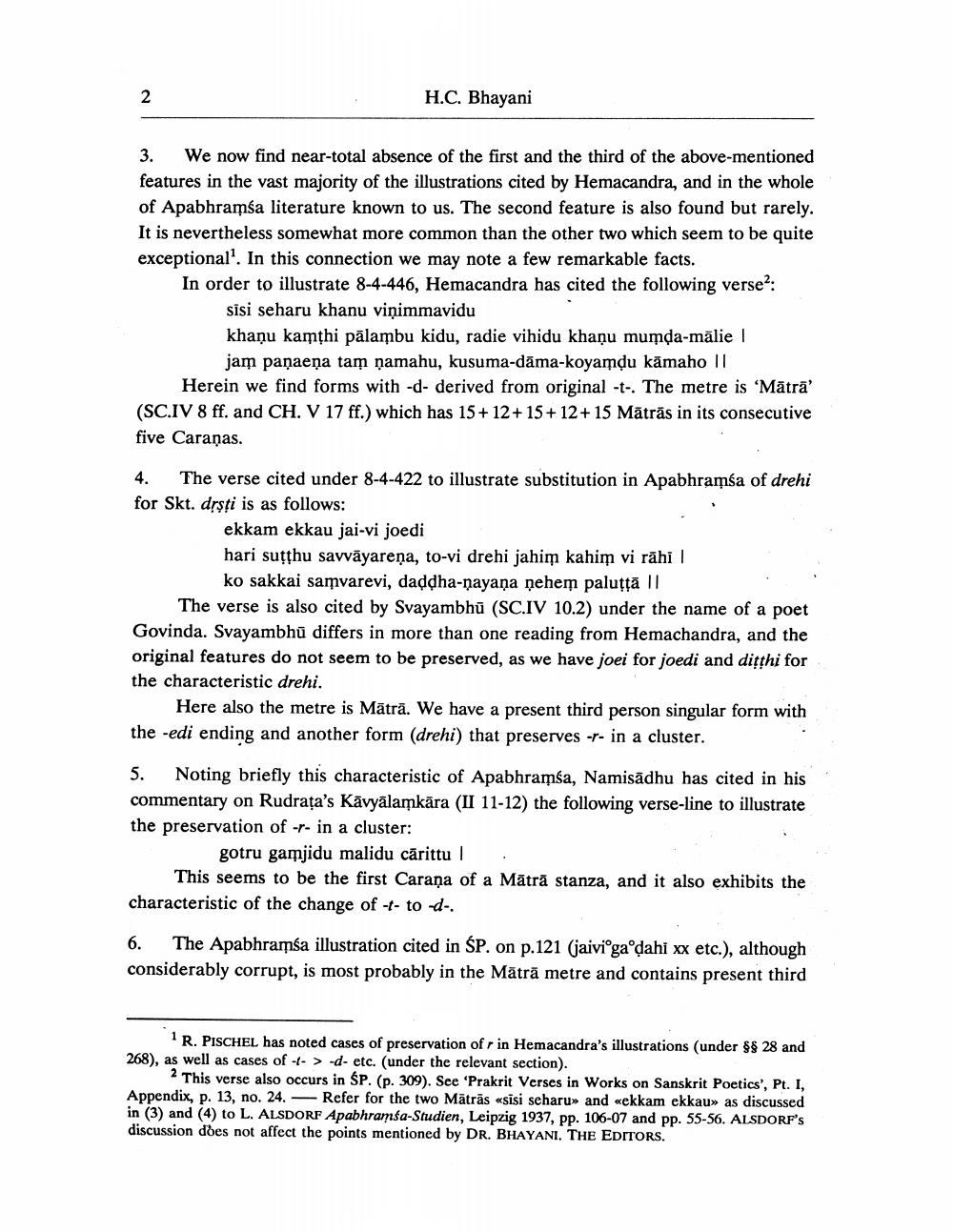Book Title: On Early Apbhramsa Author(s): H C Bhayani Publisher: H C Bhayani View full book textPage 2
________________ H.C. Bhayani 3. We now find near-total absence of the first and the third of the above-mentioned features in the vast majority of the illustrations cited by Hemacandra, and in the whole of Apabhramsa literature known to us. The second feature is also found but rarely. It is nevertheless somewhat more common than the other two which seem to be quite exceptionall. In this connection we may note a few remarkable facts. In order to illustrate 8-4-446, Hemacandra has cited the following verse: sisi seharu khanu viņimmavidu khaņu kamțhi pālambu kidu, radie vihidu khaņu mumda-mālie jam paņaeņa tam namahu, kusuma-dāma-koyamdu kāmaho Il Herein we find forms with -d- derived from original -t-. The metre is 'Mātrā' (SC.IV 8 ff. and CH. V 17 ff.) which has 15+12+15+12+15 Mātrās in its consecutive five Caraņas. 4. The verse cited under 8-4-422 to illustrate substitution in Apabhramba of drehi for Skt. drsti is as follows: ekkam ekkau jai-vi joedi hari sutthu savvāyareņa, to-vi drehi jahim kahim vi rähi ko sakkai samvarevi, daddha-nayana nehem paluţtā 11 The verse is also cited by Svayambhū (SC.IV 10.2) under the name of a poet Govinda. Svayambhū differs in more than one reading from Hemachandra, and the original features do not seem to be preserved, as we have joei for joedi and ditthi for the characteristic drehi. Here also the metre is Mātrā. We have a present third person singular form with the -edi ending and another form (drehi) that preserves --- in a cluster. 5. Noting briefly this characteristic of Apabhramsa, Namisādhu has cited in his commentary on Rudrata's Kāvyālamkāra (II 11-12) the following verse-line to illustrate the preservation of -r- in a cluster: gotru gamjidu malidu cārittu This seems to be the first Caraņa of a Mātrā stanza, and it also exhibits the characteristic of the change of -- to d.. 6. The Apabhramba illustration cited in ŚP. on p.121 (jaivioga dahi xx etc.), although considerably corrupt, is most probably in the Mäträ metre and contains present third R. PISCHEL has noted cases of preservation of r in Hemacandra's illustrations (under $8 28 and 268), as well as cases of -- > -d-etc. (under the relevant section). 2 This verse also occurs in ŚP. (p. 309). See 'Prakrit Verses in Works on Sanskrit Poetics', Pt. I, Appendix, p. 13, no. 24. — Refer for the two Mātrās «sisi seharu> and <ekkam ekkau» as discussed in (3) and (4) to L. ALSDORF Apabhramsa-Studien, Leipzig 1937, pp. 106-07 and pp. 55-56. ALSDORF's discussion does not affect the points mentioned by DR. BHAYANI. THE EDITORS.Page Navigation
1 2 3 4 5 6 7
